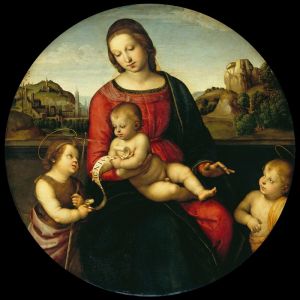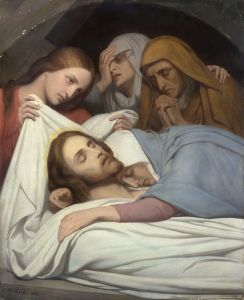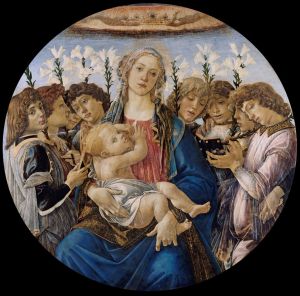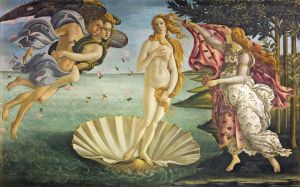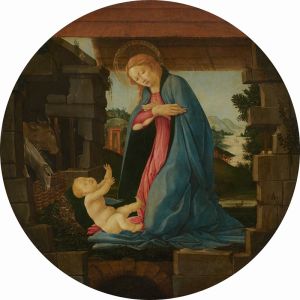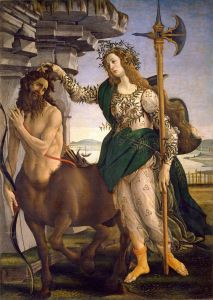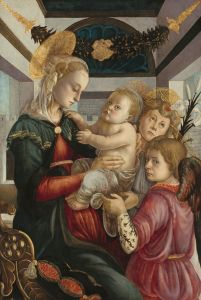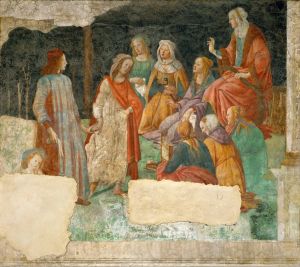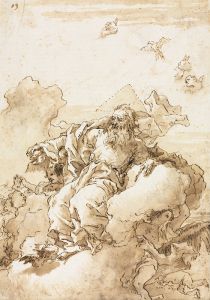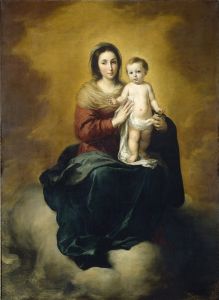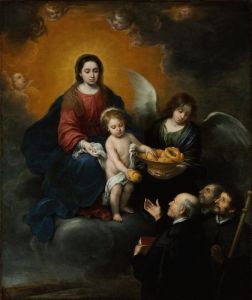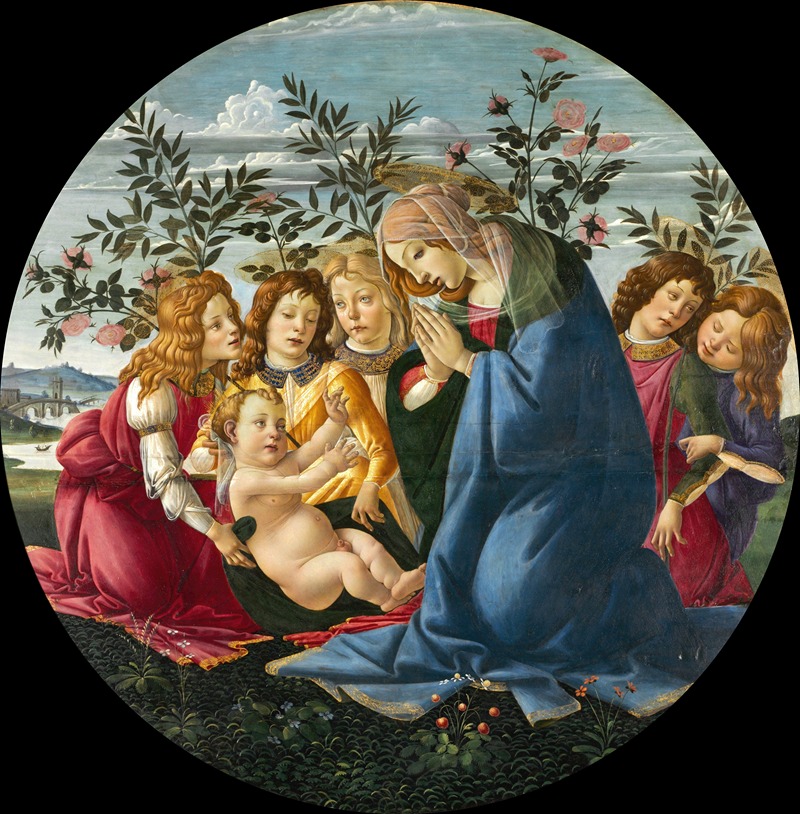
Madonna Adoring the Child with Five Angels
A hand-painted replica of Sandro Botticelli’s masterpiece Madonna Adoring the Child with Five Angels, meticulously crafted by professional artists to capture the true essence of the original. Each piece is created with museum-quality canvas and rare mineral pigments, carefully painted by experienced artists with delicate brushstrokes and rich, layered colors to perfectly recreate the texture of the original artwork. Unlike machine-printed reproductions, this hand-painted version brings the painting to life, infused with the artist’s emotions and skill in every stroke. Whether for personal collection or home decoration, it instantly elevates the artistic atmosphere of any space.
"Madonna Adoring the Child with Five Angels" is a painting by the renowned Italian Renaissance artist Sandro Botticelli. Botticelli, whose full name was Alessandro di Mariano di Vanni Filipepi, was an influential figure in the Florentine art scene during the late 15th century. He is best known for his mythological and religious works, which are characterized by their graceful figures and intricate details.
This particular painting, "Madonna Adoring the Child with Five Angels," is a fine example of Botticelli's religious art. It depicts the Virgin Mary in a moment of adoration, gazing lovingly at the Christ Child. The composition is enriched by the presence of five angels, who surround the central figures, adding a sense of divine presence and celestial harmony to the scene.
The painting is notable for its delicate use of color and light, which are hallmarks of Botticelli's style. The figures are rendered with a soft, almost ethereal quality, and the drapery of their garments is depicted with flowing lines that enhance the sense of movement and grace. Botticelli's attention to detail is evident in the intricate patterns of the fabrics and the serene expressions on the faces of the Madonna and the angels.
The theme of the Madonna and Child was a popular subject in Renaissance art, reflecting the deep religious devotion of the period. Botticelli's interpretation is distinguished by its emphasis on the tender relationship between mother and child, as well as the spiritual significance of the scene. The angels, often seen as messengers of God, serve to underscore the sacred nature of the moment.
Botticelli's work was heavily influenced by the cultural and intellectual environment of Florence during the Renaissance. The city was a hub of artistic innovation and humanist thought, which is reflected in the harmonious composition and idealized beauty of his paintings. "Madonna Adoring the Child with Five Angels" exemplifies these qualities, showcasing Botticelli's mastery of form and his ability to convey deep spiritual themes through art.
The painting's provenance and current location are not widely documented in public sources, which is not uncommon for works from this period. Many of Botticelli's paintings have been dispersed across various collections, both public and private, over the centuries. His works are highly valued for their artistic merit and historical significance, making them important pieces in the study of Renaissance art.
In summary, "Madonna Adoring the Child with Five Angels" is a testament to Sandro Botticelli's skill as a painter and his ability to infuse religious subjects with grace and beauty. The painting captures a moment of divine adoration, brought to life through Botticelli's exquisite use of line, color, and composition. It remains an enduring example of the artistic achievements of the Italian Renaissance.





